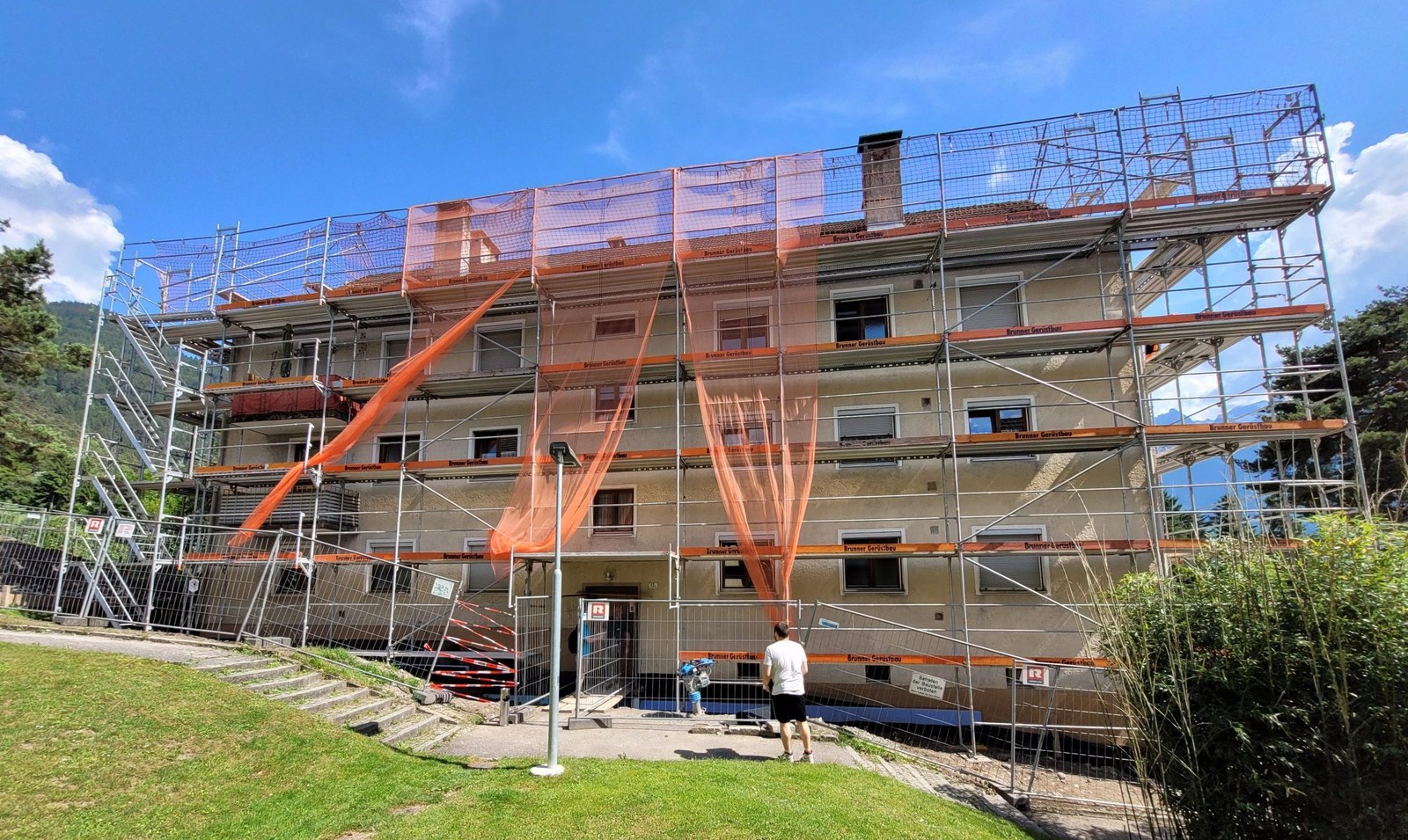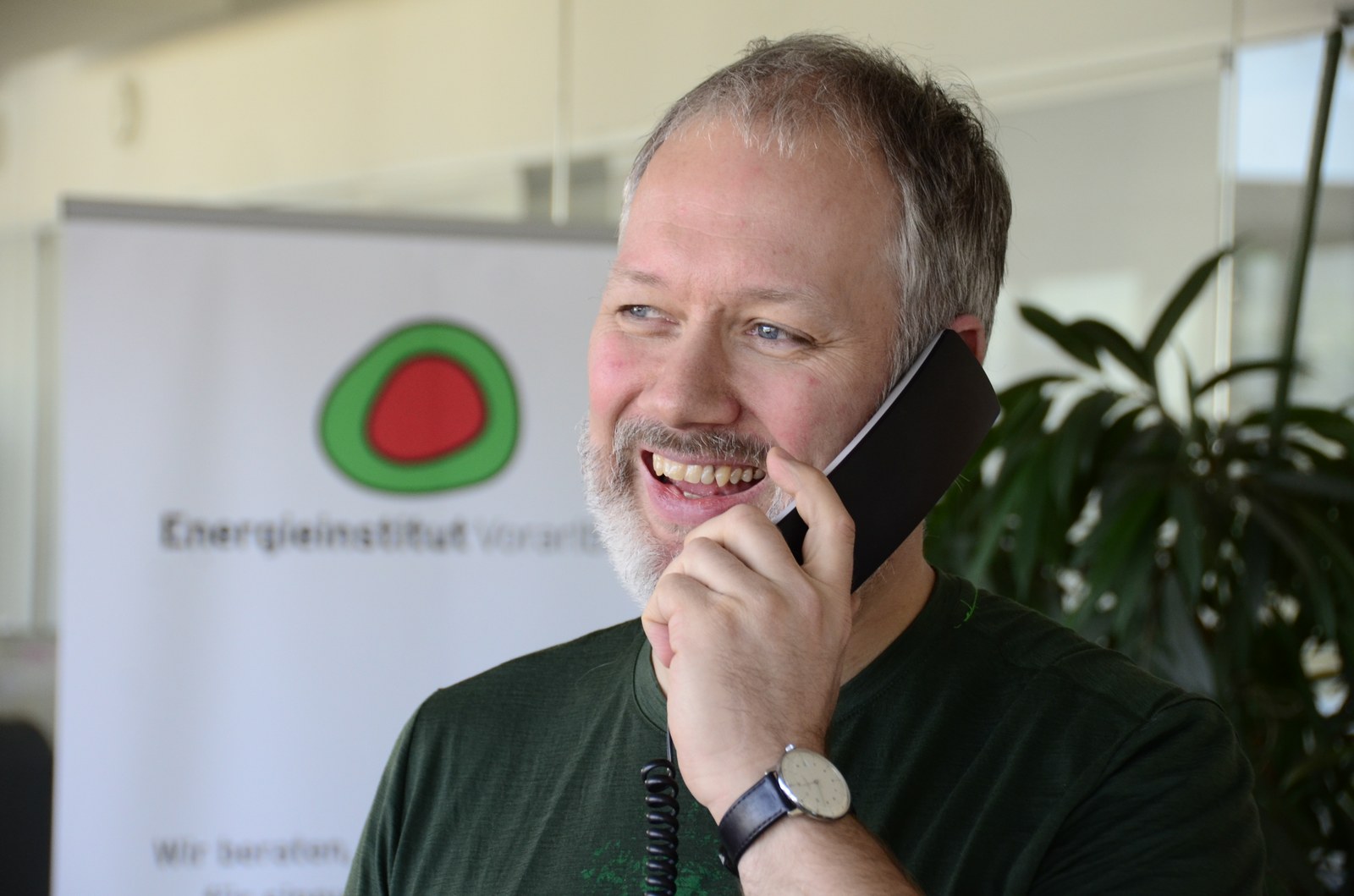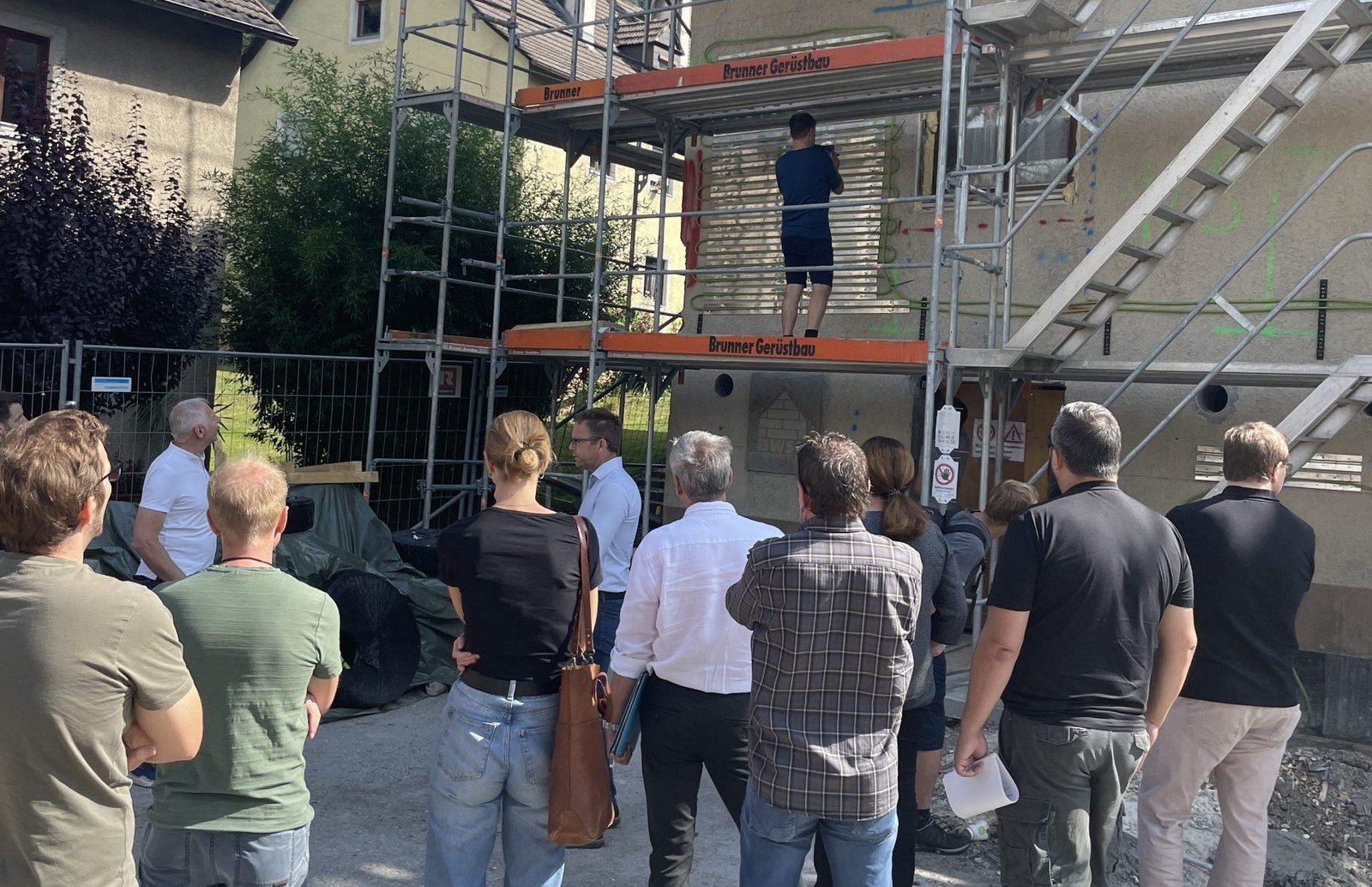Südsan – Exemplary rehabilitation of South Tyrolean settlement
In the project, two multi-family houses of the South Tyrolean settlement in Bludenz are refurbished and the best solution in terms of energy and economy is determined. The building types of the settlement, which was built in 1943-62 with 397 residential units, are representative for large parts of the Austrian inventory. They are mostly preserved in their original condition and are heated exclusively by individual stoves.


Target
The aim is to determine the variant from a large number of possible renovation variants that leads to the lowest total costs for repayment of renovation costs, maintenance and repair costs, and energy costs. From the selected solutions, important conclusions will be drawn for the refurbishment of the other buildings in the settlement; to this end, a study will also be carried out on a possible local heating supply for the entire settlement.
Project partner
- Overall project management: Martin Ploß, Energieinstitut Vorarlberg
- Alpenländische Non-profit housing GmbH
- University of Innsbruck, Institute of Construction and Materials Science, Department of Energy Efficient Construction
- AEE Institute for Sustainable Technologies
- Johannes Kaufmann Architecture
- Planning team –Plus GmbH
Project details
- Project period: 01.01.2022 bis 31.12.2024
- Total cost: EUR 1.378.849
- Funding framework: EUR 714.556
This project is funded by the FFG.
Project flow
The SüdSan project aims to facilitate the widespread implementation of refurbishments of older multi-family buildings that are expected to achieve the agreed climate targets after refurbishment. To this end, robust data on the additional costs of efficient refurbishments is being collected, with a focus on lifecycle costs rather than investment costs. In addition, methods for energy-economic optimization will be disseminated. The project is intended to serve as a practical example of how to reconcile climate protection and social compatibility.
Structural Implementation
An interim report on the research project was presented during a site visit on July 20, 2023 and the status of the construction work was explained. The visit focused on the installation of a new type of wall heating system on the exterior wall, which is being used for the first time in residential buildings as the sole heat emission system.
One advantage of external wall heating is that it can be retrofitted in existing buildings without any structural measures or space requirements in the interior. This makes the technology particularly suitable for renovating buildings that previously had no water-based heat output system.
How the external wall heating system works
For thermal activation, the solid external walls are fitted with hydraulic heating coils from the outside and then very well insulated in order to minimize the heat loss of the panel heating system to the outside. The individual heating circuits are installed on the external wall in a room-specific manner. They are controlled by individual room controllers, which open or close the heating circuit for each room individually, similar to underfloor heating. The flow temperature varies depending on the outside air temperature.
Project outcome
Project results to date 2023
- It is technically possible to achieve climate target-compliant energy requirements and greenhouse gas emissions even in older, previously unrenovated apartment buildings
- The additional costs of a high-quality energy design compared to a design in accordance with the minimum requirements of OIB RL 6 or the Building Technology Ordinance are negligible if the current federal funding is taken into account. (High-quality means, for example, very good envelope quality, comfort ventilation with heat recovery, innovative heat pump solutions, retrofitted heat distribution and output network and large PV systems)
- When renovating old buildings with a large renovation backlog, there is a lot of necessary repair work to rectify defects in addition to energy efficiency upgrades. It is therefore hardly surprising that the total refurbishment costs approach the costs of new construction.

